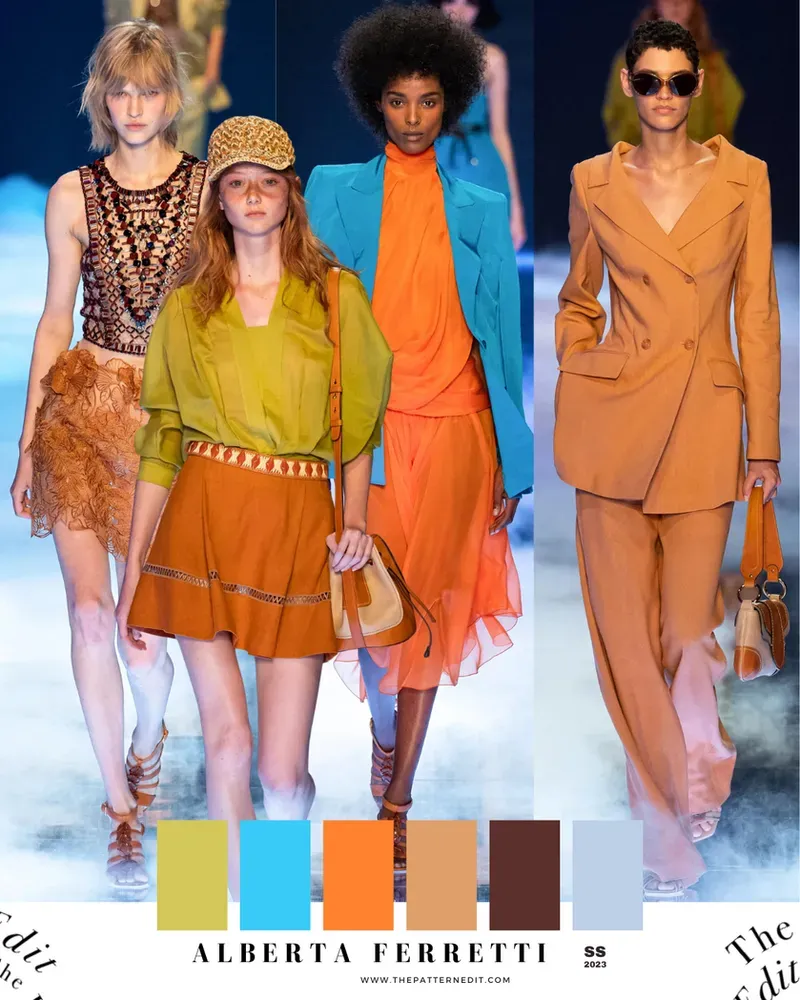Color Trends in Fashion shape the way we present ourselves, influence mood, and guide how we curate our wardrobes. When you understand what colors are resonating on runways and in street style, you can assemble outfits that feel current without losing your personal touch. This guide highlights color blocking trends, explains how to mix and match outfits, and introduces fashion color palettes you can actually wear. By weaving seasonal color trends and practical tips for styling colors into daily routines, you can craft cohesive looks that stay wearable. With confidence and intention, you’ll start to navigate color choices that elevate your style.
Beyond the headline trends, the story of color in apparel unfolds as hue narratives that guide how you compose outfits. Designers’ palettes, street style, and consumer preferences intersect to reveal the season’s chromatic direction and mood. Think of color as a language: wardrobe color stories that shift with seasons, fabrics, and accessories, rather than rigid rules. By focusing on hue families, contrasts, and neutrals, you can build versatile looks that stay fresh while reflecting your personal taste.
Color Trends in Fashion: Reading Runways, Building a Practical Palette, and Color Blocking
Color trends don’t emerge by accident; they reflect design philosophy, cultural moments, and consumer behavior. Designers pull from art, nature, and technology, while color institutes like Pantone track seasonal color trends and craft color stories that filter into wardrobes as fashion color palettes. To stay current, observe color stories in runways, fashion magazines, and street style, noting how hues appear together—whether through high-contrast pairings like electric blue with coral or through tonal blends such as taupe with soft gray. This kind of observation helps you identify signals you can translate into everyday outfits without losing your personal touch.
A practical color strategy starts with a grounded neutral base and a core set of colors you love. Build a capsule around five core colors and add three accents drawn from seasonal color trends. Consider your skin undertone, hair color, and eye color to guide these choices, ensuring they flatter you across different contexts. This framework also teaches you how to mix and match outfits, making it easier to stay cohesive while experimenting with new hues that feel current within the Color Trends in Fashion landscape.
Mastering Color Blocking and Mixing: A Practical Guide to Seasonal Color Trends and Palettes
Color blocking trends celebrate bold, graphic looks built from solid color blocks. To succeed, start with a dominant hue and anchor it with a grounding neutral, creating visual clarity and impact. You can play with complementary colors on opposite sides of the color wheel, or opt for related tones for a more harmonious effect. When you’re new to color blocking, begin with accessories and gradually move to complete top-and-bottom color-blocked outfits. This approach translates well across professional attire, casual wear, and special occasions when executed with proportion and confidence.
Apply color blocking principles to real-world outfits by following a simple, repeatable framework. Define a dominant color, choose a secondary hue that complements or contrasts, and integrate neutrals to anchor the look. Use the 60-30-10 rule to balance the colors (60% dominant, 30% secondary, 10% accent) and layer textures to add depth without increasing color count. Treat accessories as color glue—shoes, bags, belts, and jewelry can unify disparate hues. For consistent results, test the look in natural light because colors shift with lighting. These steps form a practical toolkit, including tips for styling colors to stay polished under varying conditions.
Frequently Asked Questions
What are the latest color blocking trends in Color Trends in Fashion, and how can you apply them to everyday outfits?
Color blocking trends in Color Trends in Fashion emphasize bold color blocks and clean silhouettes. Start with a dominant hue and anchor it with a neutral, then add a second color for contrast or a tonal variation for harmony. Limit to two or three color blocks to keep looks balanced, and begin with color-blocked accessories or a top paired with neutrals before trying full color-block outfits.
How can you use seasonal color trends and fashion color palettes to build a cohesive wardrobe while applying tips for styling colors and learning how to mix and match outfits?
Seasonal color trends and fashion color palettes provide a framework for choosing flattering hues. Build a capsule wardrobe around five core colors and add three accents drawn from current seasonal palettes. Consider your skin undertone when selecting colors, using the 60-30-10 rule to balance dominant, secondary, and accent tones. Apply tips for styling colors by choosing neutrals to ground outfits and mixing and matching pieces so a single color appears across different items, creating cohesive looks.
| Aspect | Key Points |
|---|---|
| Introduction | Color Trends in Fashion shape how we present ourselves, influence mood, and guide wardrobe decisions. Reading runway and street style helps you assemble outfits that feel current while preserving personal touch—aiming for a practical palette and confident mixing and matching. Emphasis on color-blocking, cohesive palettes, and versatile styling tips for everyday wear. |
| Understanding Color Trends in Fashion | These trends aren’t random: they emerge from design philosophy, culture, and consumer behavior. Designers draw from art, nature, and technology; color institutes like Pantone track shifts and influence mainstream palettes. Colors act as signals, not rigid rules. |
| Translating Seasonal Palettes | To translate palettes into outfits, observe color stories in fashion magazines, runway coverage, and brands you wear. Notice which hues pair together—high-contrast or tonal. Look for recurring color families across fabrics and textures, and choose a few colors that suit your skin tone, lifestyle, and mood within the Color Trends in Fashion framework. |
| Color Blocking & Versatile Pairings | Color blocking uses solid color blocks for bold looks. Start with a dominant hue anchored by neutrals, and consider complementary colors. Limit to two or three color blocks in a single look. Start with accessories if new to the technique; works across professional, casual, and special occasions with proper proportion. |
| Seasonal Palettes & Wardrobe Fundamentals | Seasonal palettes guide cohesive closets. Warm palettes offer earthy vibes; cool palettes feel modern. Neutral anchors (black, white, beige, ivory, gray, navy) pair with most colors. Build a capsule around five core colors plus three accents, mindful of skin undertone, hair, and eye color. |
| Mix & Match Like a Pro | Practical steps: define a dominant color; pick a secondary color; incorporate neutrals; apply the 60-30-10 rule; use patterns/textures strategically; let accessories glue the look; consider value and saturation; test in natural light. |
| Practical Wardrobe Strategies & Pitfalls | Create a color bible and refresh it seasonally; keep core neutrals for flexibility. Common mistakes include too many bright colors, ignoring skin tone, and neglecting fit or fabric quality. Prioritize quality fabrics and tailoring to let color decisions shine. |
| Real-World Scenarios | Examples: a navy dress with an emerald blazer and neutral shoes; weekend lavender top with white jeans and a camel trench; cobalt top with sunny yellow bottom for color-blocking. Seasonal pieces can be swapped to stay aligned with Color Trends in Fashion. |
| Seasonal Shifts | Seasonal changes offer opportunities to refresh your wardrobe by swapping in key pieces from the current color palette while maintaining your signature style. |



